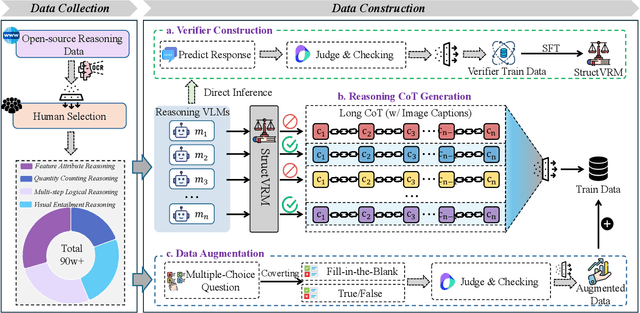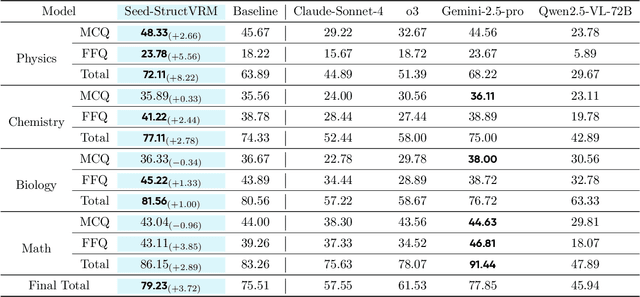Liang Hu
GTR-Mamba: Geometry-to-Tangent Routing for Hyperbolic POI Recommendation
Oct 27, 2025Abstract:Next Point-of-Interest (POI) recommendation is a critical task in modern Location-Based Social Networks (LBSNs), aiming to model the complex decision-making process of human mobility to provide personalized recommendations for a user's next check-in location. Existing POI recommendation models, predominantly based on Graph Neural Networks and sequential models, have been extensively studied. However, these models face a fundamental limitation: they struggle to simultaneously capture the inherent hierarchical structure of spatial choices and the dynamics and irregular shifts of user-specific temporal contexts. To overcome this limitation, we propose GTR-Mamba, a novel framework for cross-manifold conditioning and routing. GTR-Mamba leverages the distinct advantages of different mathematical spaces for different tasks: it models the static, tree-like preference hierarchies in hyperbolic geometry, while routing the dynamic sequence updates to a novel Mamba layer in the computationally stable and efficient Euclidean tangent space. This process is coordinated by a cross-manifold channel that fuses spatio-temporal information to explicitly steer the State Space Model (SSM), enabling flexible adaptation to contextual changes. Extensive experiments on three real-world datasets demonstrate that GTR-Mamba consistently outperforms state-of-the-art baseline models in next POI recommendation.
CUFG: Curriculum Unlearning Guided by the Forgetting Gradient
Sep 18, 2025Abstract:As privacy and security take center stage in AI, machine unlearning, the ability to erase specific knowledge from models, has garnered increasing attention. However, existing methods overly prioritize efficiency and aggressive forgetting, which introduces notable limitations. In particular, radical interventions like gradient ascent, influence functions, and random label noise can destabilize model weights, leading to collapse and reduced reliability. To address this, we propose CUFG (Curriculum Unlearning via Forgetting Gradients), a novel framework that enhances the stability of approximate unlearning through innovations in both forgetting mechanisms and data scheduling strategies. Specifically, CUFG integrates a new gradient corrector guided by forgetting gradients for fine-tuning-based unlearning and a curriculum unlearning paradigm that progressively forgets from easy to hard. These innovations narrow the gap with the gold-standard Retrain method by enabling more stable and progressive unlearning, thereby improving both effectiveness and reliability. Furthermore, we believe that the concept of curriculum unlearning has substantial research potential and offers forward-looking insights for the development of the MU field. Extensive experiments across various forgetting scenarios validate the rationale and effectiveness of our approach and CUFG. Codes are available at https://anonymous.4open.science/r/CUFG-6375.
FinSearchComp: Towards a Realistic, Expert-Level Evaluation of Financial Search and Reasoning
Sep 16, 2025



Abstract:Search has emerged as core infrastructure for LLM-based agents and is widely viewed as critical on the path toward more general intelligence. Finance is a particularly demanding proving ground: analysts routinely conduct complex, multi-step searches over time-sensitive, domain-specific data, making it ideal for assessing both search proficiency and knowledge-grounded reasoning. Yet no existing open financial datasets evaluate data searching capability of end-to-end agents, largely because constructing realistic, complicated tasks requires deep financial expertise and time-sensitive data is hard to evaluate. We present FinSearchComp, the first fully open-source agent benchmark for realistic, open-domain financial search and reasoning. FinSearchComp comprises three tasks -- Time-Sensitive Data Fetching, Simple Historical Lookup, and Complex Historical Investigation -- closely reproduce real-world financial analyst workflows. To ensure difficulty and reliability, we engage 70 professional financial experts for annotation and implement a rigorous multi-stage quality-assurance pipeline. The benchmark includes 635 questions spanning global and Greater China markets, and we evaluate 21 models (products) on it. Grok 4 (web) tops the global subset, approaching expert-level accuracy. DouBao (web) leads on the Greater China subset. Experimental analyses show that equipping agents with web search and financial plugins substantially improves results on FinSearchComp, and the country origin of models and tools impact performance significantly.By aligning with realistic analyst tasks and providing end-to-end evaluation, FinSearchComp offers a professional, high-difficulty testbed for complex financial search and reasoning.
Skywork UniPic 2.0: Building Kontext Model with Online RL for Unified Multimodal Model
Sep 04, 2025Abstract:Recent advances in multimodal models have demonstrated impressive capabilities in unified image generation and editing. However, many prominent open-source models prioritize scaling model parameters over optimizing training strategies, limiting their efficiency and performance. In this work, we present UniPic2-SD3.5M-Kontext, a 2B-parameter DiT model based on SD3.5-Medium, which achieves state-of-the-art image generation and editing while extending seamlessly into a unified multimodal framework. Our approach begins with architectural modifications to SD3.5-Medium and large-scale pre-training on high-quality data, enabling joint text-to-image generation and editing capabilities. To enhance instruction following and editing consistency, we propose a novel Progressive Dual-Task Reinforcement strategy (PDTR), which effectively strengthens both tasks in a staged manner. We empirically validate that the reinforcement phases for different tasks are mutually beneficial and do not induce negative interference. After pre-training and reinforcement strategies, UniPic2-SD3.5M-Kontext demonstrates stronger image generation and editing capabilities than models with significantly larger generation parameters-including BAGEL (7B) and Flux-Kontext (12B). Furthermore, following the MetaQuery, we connect the UniPic2-SD3.5M-Kontext and Qwen2.5-VL-7B via a connector and perform joint training to launch a unified multimodal model UniPic2-Metaquery. UniPic2-Metaquery integrates understanding, generation, and editing, achieving top-tier performance across diverse tasks with a simple and scalable training paradigm. This consistently validates the effectiveness and generalizability of our proposed training paradigm, which we formalize as Skywork UniPic 2.0.
StructVRM: Aligning Multimodal Reasoning with Structured and Verifiable Reward Models
Aug 07, 2025



Abstract:Existing Vision-Language Models often struggle with complex, multi-question reasoning tasks where partial correctness is crucial for effective learning. Traditional reward mechanisms, which provide a single binary score for an entire response, are too coarse to guide models through intricate problems with multiple sub-parts. To address this, we introduce StructVRM, a method that aligns multimodal reasoning with Structured and Verifiable Reward Models. At its core is a model-based verifier trained to provide fine-grained, sub-question-level feedback, assessing semantic and mathematical equivalence rather than relying on rigid string matching. This allows for nuanced, partial credit scoring in previously intractable problem formats. Extensive experiments demonstrate the effectiveness of StructVRM. Our trained model, Seed-StructVRM, achieves state-of-the-art performance on six out of twelve public multimodal benchmarks and our newly curated, high-difficulty STEM-Bench. The success of StructVRM validates that training with structured, verifiable rewards is a highly effective approach for advancing the capabilities of multimodal models in complex, real-world reasoning domains.
Recalling The Forgotten Class Memberships: Unlearned Models Can Be Noisy Labelers to Leak Privacy
Jun 24, 2025Abstract:Machine Unlearning (MU) technology facilitates the removal of the influence of specific data instances from trained models on request. Despite rapid advancements in MU technology, its vulnerabilities are still underexplored, posing potential risks of privacy breaches through leaks of ostensibly unlearned information. Current limited research on MU attacks requires access to original models containing privacy data, which violates the critical privacy-preserving objective of MU. To address this gap, we initiate an innovative study on recalling the forgotten class memberships from unlearned models (ULMs) without requiring access to the original one. Specifically, we implement a Membership Recall Attack (MRA) framework with a teacher-student knowledge distillation architecture, where ULMs serve as noisy labelers to transfer knowledge to student models. Then, it is translated into a Learning with Noisy Labels (LNL) problem for inferring the correct labels of the forgetting instances. Extensive experiments on state-of-the-art MU methods with multiple real datasets demonstrate that the proposed MRA strategy exhibits high efficacy in recovering class memberships of unlearned instances. As a result, our study and evaluation have established a benchmark for future research on MU vulnerabilities.
COLUR: Confidence-Oriented Learning, Unlearning and Relearning with Noisy-Label Data for Model Restoration and Refinement
Jun 24, 2025Abstract:Large deep learning models have achieved significant success in various tasks. However, the performance of a model can significantly degrade if it is needed to train on datasets with noisy labels with misleading or ambiguous information. To date, there are limited investigations on how to restore performance when model degradation has been incurred by noisy label data. Inspired by the ``forgetting mechanism'' in neuroscience, which enables accelerating the relearning of correct knowledge by unlearning the wrong knowledge, we propose a robust model restoration and refinement (MRR) framework COLUR, namely Confidence-Oriented Learning, Unlearning and Relearning. Specifically, we implement COLUR with an efficient co-training architecture to unlearn the influence of label noise, and then refine model confidence on each label for relearning. Extensive experiments are conducted on four real datasets and all evaluation results show that COLUR consistently outperforms other SOTA methods after MRR.
4D-ROLLS: 4D Radar Occupancy Learning via LiDAR Supervision
May 20, 2025Abstract:A comprehensive understanding of 3D scenes is essential for autonomous vehicles (AVs), and among various perception tasks, occupancy estimation plays a central role by providing a general representation of drivable and occupied space. However, most existing occupancy estimation methods rely on LiDAR or cameras, which perform poorly in degraded environments such as smoke, rain, snow, and fog. In this paper, we propose 4D-ROLLS, the first weakly supervised occupancy estimation method for 4D radar using the LiDAR point cloud as the supervisory signal. Specifically, we introduce a method for generating pseudo-LiDAR labels, including occupancy queries and LiDAR height maps, as multi-stage supervision to train the 4D radar occupancy estimation model. Then the model is aligned with the occupancy map produced by LiDAR, fine-tuning its accuracy in occupancy estimation. Extensive comparative experiments validate the exceptional performance of 4D-ROLLS. Its robustness in degraded environments and effectiveness in cross-dataset training are qualitatively demonstrated. The model is also seamlessly transferred to downstream tasks BEV segmentation and point cloud occupancy prediction, highlighting its potential for broader applications. The lightweight network enables 4D-ROLLS model to achieve fast inference speeds at about 30 Hz on a 4060 GPU. The code of 4D-ROLLS will be made available at https://github.com/CLASS-Lab/4D-ROLLS.
RUSSO: Robust Underwater SLAM with Sonar Optimization against Visual Degradation
Mar 03, 2025



Abstract:Visual degradation in underwater environments poses unique and significant challenges, which distinguishes underwater SLAM from popular vision-based SLAM on the ground. In this paper, we propose RUSSO, a robust underwater SLAM system which fuses stereo camera, inertial measurement unit (IMU), and imaging sonar to achieve robust and accurate localization in challenging underwater environments for 6 degrees of freedom (DoF) estimation. During visual degradation, the system is reduced to a sonar-inertial system estimating 3-DoF poses. The sonar pose estimation serves as a strong prior for IMU propagation, thereby enhancing the reliability of pose estimation with IMU propagation. Additionally, we propose a SLAM initialization method that leverages the imaging sonar to counteract the lack of visual features during the initialization stage of SLAM. We extensively validate RUSSO through experiments in simulator, pool, and sea scenarios. The results demonstrate that RUSSO achieves better robustness and localization accuracy compared to the state-of-the-art visual-inertial SLAM systems, especially in visually challenging scenarios. To the best of our knowledge, this is the first time fusing stereo camera, IMU, and imaging sonar to realize robust underwater SLAM against visual degradation.
Certificated Actor-Critic: Hierarchical Reinforcement Learning with Control Barrier Functions for Safe Navigation
Jan 29, 2025Abstract:Control Barrier Functions (CBFs) have emerged as a prominent approach to designing safe navigation systems of robots. Despite their popularity, current CBF-based methods exhibit some limitations: optimization-based safe control techniques tend to be either myopic or computationally intensive, and they rely on simplified system models; conversely, the learning-based methods suffer from the lack of quantitative indication in terms of navigation performance and safety. In this paper, we present a new model-free reinforcement learning algorithm called Certificated Actor-Critic (CAC), which introduces a hierarchical reinforcement learning framework and well-defined reward functions derived from CBFs. We carry out theoretical analysis and proof of our algorithm, and propose several improvements in algorithm implementation. Our analysis is validated by two simulation experiments, showing the effectiveness of our proposed CAC algorithm.
 Add to Chrome
Add to Chrome Add to Firefox
Add to Firefox Add to Edge
Add to Edge